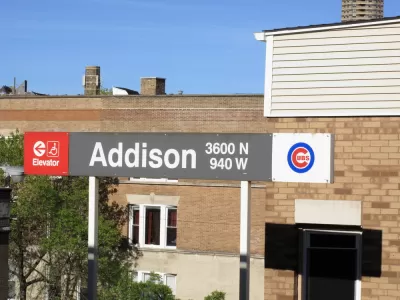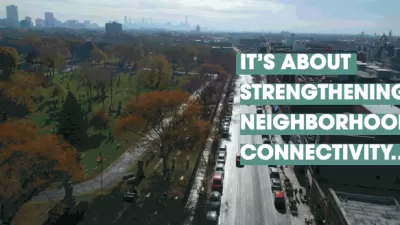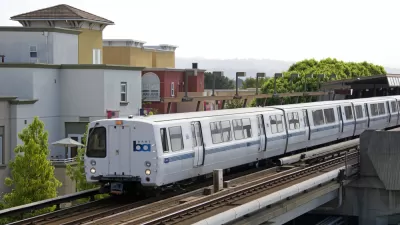A wave of investments is visiting one of the most famous, and notorious, neighborhoods in the city of Chicago. The question is whether the final product will be worth the expense.

Blair Kamin provides commentary on the large-scale redevelopment going on in the neighborhood immediately surrounding Wrigley Field in Chicago—finding reasons to be concerned that the quality of future developments will match the neighborhoods role as a hub of activity in the city.
"The outcome will speak to an issue that resounds far beyond Chicago: Whether public officials can effectively manage the growing phenomenon of 'transit-oriented development,' which encourages high-density construction near transit and commuter rail stops to cut down on car use and save energy," writes Kamin
Two of the larger projects under discussion $2.1 billion Red and Purple lines modernization project, which requires the demolition of 14 structures, and a $1 billion investment by the Cubs that includes renovations at the ballpark, a new outdoor plaza, a new office building for the team, and a new hotel. Nearby there's also a new development called Addison & Clark, an eight-story building that includes apartments, shops, and a movie theater.
With all of this development potential, Kamin sees need for a warning.
Transit-oriented development — TOD, for short — may sound good in theory, but some developers use it as an pretext for bulked-up buildings that are oversized eyesores and dwarf their delicate-scaled neighborhoods. Examples now blight the otherwise attractive downtowns of suburbs like Wilmette and La Grange.
Kamin offers prescription to prevent TOD, which you can read at the full article.
FULL STORY: Around Wrigley Field, a high-stakes urban design drama plays out as buildings fall and rise

Planetizen Federal Action Tracker
A weekly monitor of how Trump’s orders and actions are impacting planners and planning in America.

Map: Where Senate Republicans Want to Sell Your Public Lands
For public land advocates, the Senate Republicans’ proposal to sell millions of acres of public land in the West is “the biggest fight of their careers.”

Restaurant Patios Were a Pandemic Win — Why Were They so Hard to Keep?
Social distancing requirements and changes in travel patterns prompted cities to pilot new uses for street and sidewalk space. Then it got complicated.

Platform Pilsner: Vancouver Transit Agency Releases... a Beer?
TransLink will receive a portion of every sale of the four-pack.

Toronto Weighs Cheaper Transit, Parking Hikes for Major Events
Special event rates would take effect during large festivals, sports games and concerts to ‘discourage driving, manage congestion and free up space for transit.”

Berlin to Consider Car-Free Zone Larger Than Manhattan
The area bound by the 22-mile Ringbahn would still allow 12 uses of a private automobile per year per person, and several other exemptions.
Urban Design for Planners 1: Software Tools
This six-course series explores essential urban design concepts using open source software and equips planners with the tools they need to participate fully in the urban design process.
Planning for Universal Design
Learn the tools for implementing Universal Design in planning regulations.
Heyer Gruel & Associates PA
JM Goldson LLC
Custer County Colorado
City of Camden Redevelopment Agency
City of Astoria
Transportation Research & Education Center (TREC) at Portland State University
Camden Redevelopment Agency
City of Claremont
Municipality of Princeton (NJ)





























